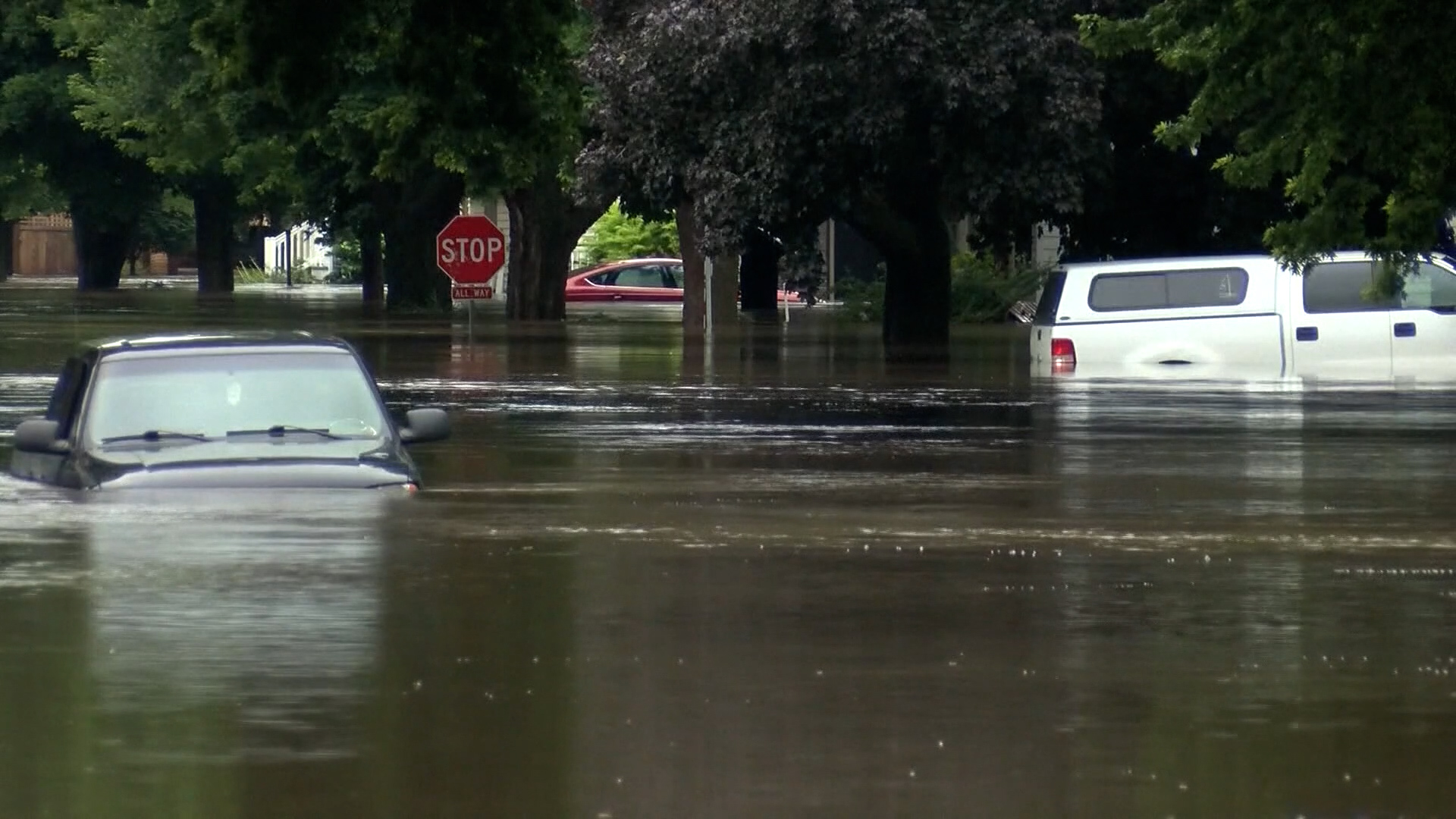Over the weekend, heavy flooding in Iowa damaged nearly 2,000 properties, causing evacuations and disaster declarations. Governor Kim Reynolds talked about the widespread damage during a news conference in Des Moines, saying it was due to a mix of heavy rain and overflowing rivers.
Some areas got up to 15 inches of rain in two days, making the flooding worse. Meteorologist Roger Vachalek explained that rain from the Gulf of Mexico hit a cool, low-pressure system moving from west to east, causing widespread flooding.
The small town of Rock Valley, Iowa, was among the hardest hit, prompting Governor Reynolds to dispatch helicopters for evacuations. Although an official death toll was unavailable, tragic incidents were reported, including a motorist’s death in Tucson, Arizona, and an 87-year-old man’s fatal accident in South Dakota.
The flooding extended beyond Iowa, impacting southern Minnesota and southeastern Dakota. With already saturated ground, the rapid and extensive flooding in northwest Iowa caused significant damage to farmland.
The floodwaters broke records at 16 locations in Iowa, including the Des Moines, Rock, and Little Sioux rivers. More than 1,000 residents sought shelter overnight, with 1,900 properties damaged and hundreds destroyed.

Some cities faced water and sewage system failures, leading to disaster declarations in 25 counties by Sunday night. Spencer, a city of over 11,000 residents, was cut off by floodwaters, leading to extensive evacuations and rescue operations. City officials, aided by neighboring departments, conducted 383 rescues.
In Spencer, a missing person was reported, with the potential recovery expected after the waters recede. The Little Sioux River exceeded its expected crest, reaching an estimated 22.1 feet, surpassing a record from 1953.
This high level made it challenging to get accurate readings, but the floodwaters started to recede, allowing some roads to become passable. Despite the severe impact, Spencer’s Mayor, Steve Bomgaars, expressed optimism about the city’s recovery.
South Dakota also faced significant flooding, prompting Governor Kristi Noem to declare a statewide emergency. The Big Sioux River was expected to crest, leading to the closure of Interstate 29 to build a temporary levee.
The National Weather Service forecasted more flooding in Iowa, with the Des Moines River at Humboldt expected to crest at 17 feet by Wednesday. The river was already flowing above the flood stage, contributing to the ongoing crisis.
While the Midwest battled floods, much of the rest of the country experienced intense heat, with 95 million people under heat alerts. Record-high temperatures persisted in the mid-Atlantic and Southwest, while the Northeast faced a mix of high temperatures and brief thunderstorms.
Federal forecasters warned of potential severe weather, including rain, wind, hail, and further flooding for parts of the Midwest and surrounding regions. Iowa Homeland Security and Emergency Management Director John Benson urged residents to remain vigilant as the severe weather continued.


